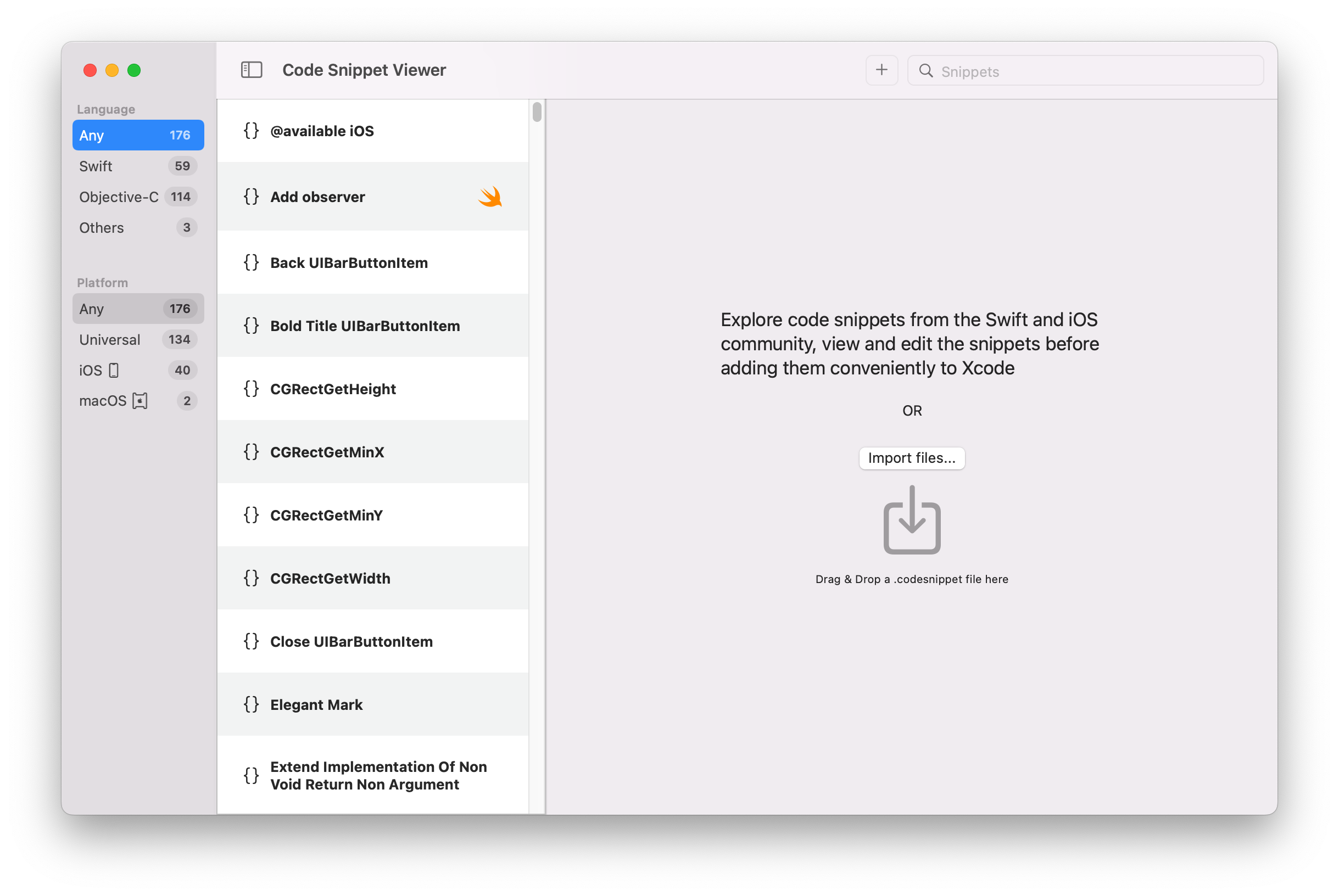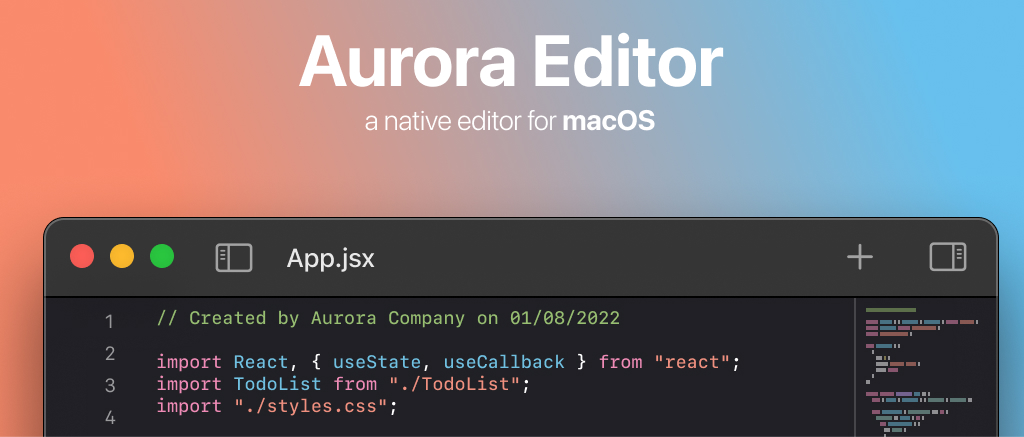aah
arm64 architecture handler.
It uses unicorn and libffi to run iOS arm64 binaries on x86_64 macOS, with varying degrees of success.
Most things will fail to launch because they need frameworks/symbols that aren't available on macOS.
Requirements
- macOS 10.15
To run iOS apps, aah relies on the Mac Catalyst frameworks that are present on macOS 10.15.
Running the sample app
The sample app is based on UIKitCatalog from the Apple sample code, with an integrated capstone disassembler to inspect functions and methods.
- Build the
TestApptarget. This builds an arm64 iOS app (TestApp.app), and makes a copy with the Mach-O header changed to be emulatable (TestApp-aah.app, in the same output directory). - Edit the
aah-TestAppscheme, select theTestApp-app.appexecutable by choosing “Other...” from the Executable drop-down menu (under Run > Info) and selecting it from the filesystem. Otherwise Xcode will complain that the target doesn't match the current platform. - Run the
aah-TestAppscheme.
Steps 1 and 2 are only necessary before the first run.
How it works
- The architecture field of the binary is changed so macOS will load it.
libaah.dylibis inserted withDYLD_INSERT_LIBRARIES.- Upon load, it will detect which loaded binaries should be emulated, by looking at the
reservedfield in the header. - On emulated binaries, the executable sections are changed to be non-executable. This will cause an
EXC_BAD_ACCESSexception when it's executed. - A signal handler is set to catch those exceptions, and emulate the code with unicorn.
- An unicorn instance will be creatd on each thread if needed, with its address space mirroring the host, except for executable sections:
- Sections with arm64 code are marked as executable for unicorn.
- Native-executable sections (i.e. system libraries) are marked as non-executable for unicorn. This causes an exception when unicorn tries to execute them, which is used to return execution to the host.
Transitions between native and emulated code
Transitions between host and emulated execution is handled by libffi at function entry/exit points, and requires the function signature to be known. This is done by keeping a mapping of entry points and their signatures (see cif.c).
The file SymbolTable.plist contains the signatures for supported functions (using Objective-C type encoding), and it's added as a section to the libaah.dylib binary. The key objc shims is used by the objc_msgSend shim to call variadic methods. This file is added as a section to the libaah.dylib binary at build time.
When new entry points are found at runtime, they are added with cif_cache_add or cif_cache_add_new. This is used for Objective-C methods, pthreads, blocks and function pointers.
The format of the method signature determines how the call is handled:
- A plain method signature will call the function by translating the arguments between the registers and stack of the host and emulator. This is enough for most functions.
$+ shim name: A shim that will be called when emulated code calls the function. The shim is defined with theSHIMDEFmacro, it receives an emulator context where it can access the registers, and can returnSHIM_RETURNor an address to continue execution. Examples:- Variadic functions:
printforNSLog(seenslog.m). - Overriding functions with custom behaviour:
objc_msgSend,setjmp.
- Variadic functions:
<+ method signature +>+ wrapper name: Defines wrapper(s) that will be called after and/or before the native function is called. The wrappers are defined with theWRAP_EMULATED_TO_NATIVEandWRAP_NATIVE_TO_EMULATEDmacros, and have argumentsrvalueandavaluesthat work like those offfi_call. Seelibdispatch.cfor examples.
Preparing an app
You will need a thin non-encrypted arm64 app to start with.
Repackaging
Repackage with this modified version of marzipanify.
This will do the following:
- Repackage it as a macOS app.
- Rename some linked libraries to the ones in
/System/iOSSupport - Change the executable's architecture to x86_64.
- Flag the executable so it's detected by
libaahto be emulated (0x456D400Cin thereservedfield of the header). - Remove the
MH_PIEflag (probably not be needed, but makes debugging easier). - Replace the
LC_VERSION_MIN_IPHONEOSload command withLC_BUILD_VERSION, or updateLC_BUILD_VERSION. - Resign the package.
Libraries
Most binaries won't launch because of missing libraries or symbols. optool might help:
- weaken linked libraries and symbols
- rename linked libraries
After modifying the binary, it will have to be resigned:
If a library is present on macOS but missing some symbols, it's possible to build a stub library with the missing symbols, and make it export all of the original library by adding -Xlinker -reexport_library /path/to/original.dylib to its linker flags.
For functions in a native library to be called from emulated code, they must have an entry in SymbolTable.plist, as an Objective-C method signature. This can be automated with the msdecl tool from CParser, how to do this is somewhat documented in SymbolTable/make_symbol_table.sh.
If the app links to libc++, package it with the arm64 version included in lib/libc++em.dylib, and rename the linked library:
optool rename /usr/lib/libc++.1.dylib @executable_path/../lib/libc++em.dylib --target /path/to/package.app/Contents/MacOS/executable
Running
Run the patched executable inserting libaah.dylib:
$ DYLD_INSERT_LIBRARIES=/path/to/libaah.dylib /path/to/executable
Environment Variables
Some useful environment variables recognised by aah:
PRINT_DISASSEMBLY=1will print disassembled instructions as they are executed by the emulator.PRINT_REGS=1will print the registers after and before function calls, or before printing each executed instruction (when combined withPRINT_DISASSEMBLY).
Debugging
To debug, you'll need a custom build of debugserver that doesn't catch EXC_BAD_ACCESS exceptions, as this prevents them from being caught as signals in libaah:
-
Download the llvm source:
$ git clone [email protected]:llvm/llvm-project.git -
Patch
lldb/tools/debugserver/source/MacOSX/MachTask.mm:diff --git a/lldb/tools/debugserver/source/MacOSX/MachTask.mm b/lldb/tools/debugserver/source/MacOSX/MachTask.mm index 6aa4fb23754..6148b628119 100644 --- a/lldb/tools/debugserver/source/MacOSX/MachTask.mm +++ b/lldb/tools/debugserver/source/MacOSX/MachTask.mm @@ -601,7 +601,7 @@ bool MachTask::StartExceptionThread(DNBError &err) { // Set the ability to get all exceptions on this port err = ::task_set_exception_ports( - task, m_exc_port_info.mask, m_exception_port, + task, m_exc_port_info.mask & ~EXC_MASK_BAD_ACCESS, m_exception_port, EXCEPTION_DEFAULT | MACH_EXCEPTION_CODES, THREAD_STATE_NONE); if (DNBLogCheckLogBit(LOG_EXCEPTIONS) || err.Fail()) { err.LogThreaded("::task_set_exception_ports ( task = 0x%4.4x, "
-
Build debugserver with Xcode and install to
/Applications/Xcode.app/Contents/SharedFrameworks/LLDB.framework/Versions/A/Resources/debugserver. You might want to save a backup of your original debugserver. -
In the
aahproject, edit theaahscheme and choose an executable/app to debug. -
Make sure the environment variables include
DYLD_INSERT_LIBRARIESwith$(TARGET_BUILD_DIR)/libaah.dylibfirst. -
Build & run
-
It will hit a
SIGBUSwhen it first encounters code to emulate. To prevent it, run this in the lldb console:There is already a shared breakpoint in the project that does this in
init_aah.(lldb) process handle --pass true --stop false --notify true SIGBUS (lldb) continue




